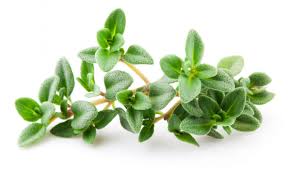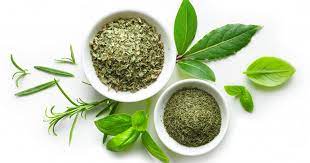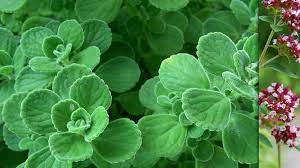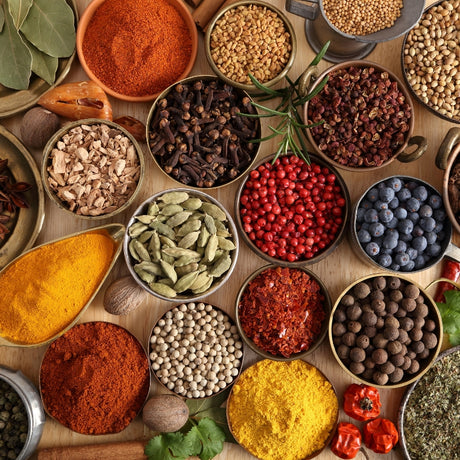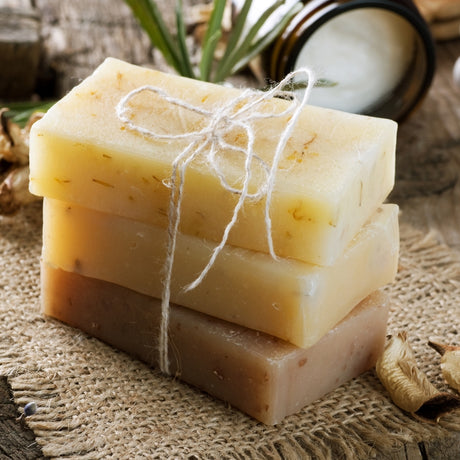Payment and security
Payment methods
Your payment information is processed securely. We do not store your credit card details and do not have access to your credit card information.
Description
Description
Oregano
In mouth
Not everyone loves oregano leaves. They owe their hairy texture to the activity of certain glands which, to defend themselves, cause the appearance of microhairs. The camphor taste of oregano highlights its use as a natural antiseptic.
Sold in a 15 g jar
Keeps
At room temperature
You can hang your excess fresh herbs, head down, to dry and store in an airtight dish. Just like store-bought dried oregano, it will keep in the pantry for more than six months.
In the fridge
Fill a glass with cold water and place your oregano branches in it. The bouquet will keep for a week. Otherwise, wrap it in a clean, damp table cloth and store it in a reusable bag.
Source : https://ici.radio-canada.ca/mordu/ingredients/234/oregano
Lavoie herbs and spices
His allies
As for aromatics, oregano goes well with garlic, cumin, fresh or dried chili pepper, lemon zest and its cousin herbs (rosemary, thyme, sage). It seasons grilled vegetables (eggplant, zucchini, pepper), red meat (lamb, pork), poultry (quail, duck, chicken) as well as dishes based on cabbage, tomatoes, beans and lentils.
Source: https://ici.radio-canada.ca/mordu/ingredients/234/oregano
Cooking
Rinse the oregano briefly under tap water and dab it dry with a clean cloth. For many stews, simply swap fresh oregano and dried oregano. Infuse a few branches while cooking a tomato sauce and remove them at the end. If you prefer, add a pinch of dried herbs right from the start.
Costs
Add a sprig of oregano to a bouquet garni for a soup or broth. Sprinkle a few leaves as a finishing touch to a dish of zaatar pasta or legumes. If you love sauerkraut or pikliz, try curtido , a Salvadoran condiment in which oregano shines. Add the flowers from your garden plan to a salad of fresh cheese, tomatoes or grilled peppers. Delicious and very pretty.
Dried
Substitute oregano for marjoram to improvise a mixture of Provence herbs. Add it to a liquid or dry marinade for fish, lamb skewers, chicken or grilling vegetables. The secret to your taverna 's homemade dressing or trattoria favorite lies in its dose of dried oregano.
Source: https://ici.radio-canada.ca/mordu/ingredients/234/oregano
Oregano is an aromatic plant of Mediterranean origin, cultivated in temperate climates and found wild in certain more arid environments.
There are generally two types of oregano: Mediterranean and Mexican. The former belongs to the Lamiaceae family, alongside herbs such as sage, mint and marjoram, with which oregano is often confused. Different varieties are found in Greece, Italy and Türkiye. The second type grows in Mexico (of course), Central America and South America. The word “oregano” is a more vernacular term than botanical in this case. The herb rather belongs to the Verbenaceae family and is similar to fragrant or lemon verbena. For those who want to dust off their Latin: inspect the label of a box of herbs to differentiate the Mediterranean genus origanum from the American species lippia graveolens .
Swapping the two herbs in your pizza or enchilada sauce isn't a crime in itself, but be aware that the substitution won't replicate the exact taste of the original recipe. Mediterranean oregano generally offers woody and minty notes, while Mexican oregano is more aniseed and lemony. Which of the two has the more intense taste? There is no consensus to date.
Fresh, local oregano can be found on stalls from spring until fall, but it resists frost very well. You can keep it in your planter until the first snow arrives. It remains available throughout the year in plan or prepackaged form. Choose a fragrant specimen, with straight branches and intact oval leaves.
Source: https://ici.radio-canada.ca/mordu/ingredients/234/oregano
